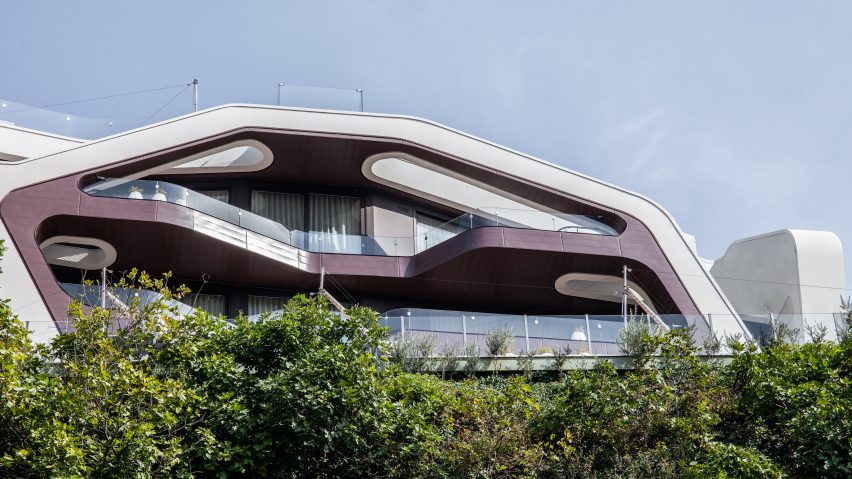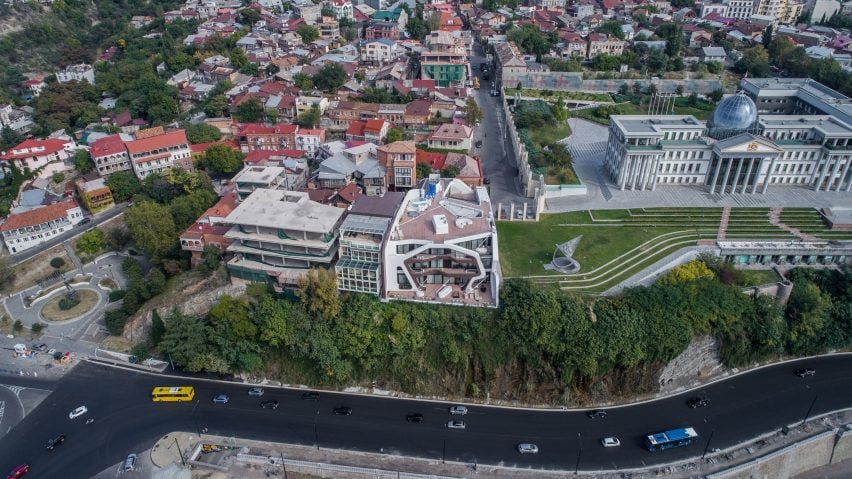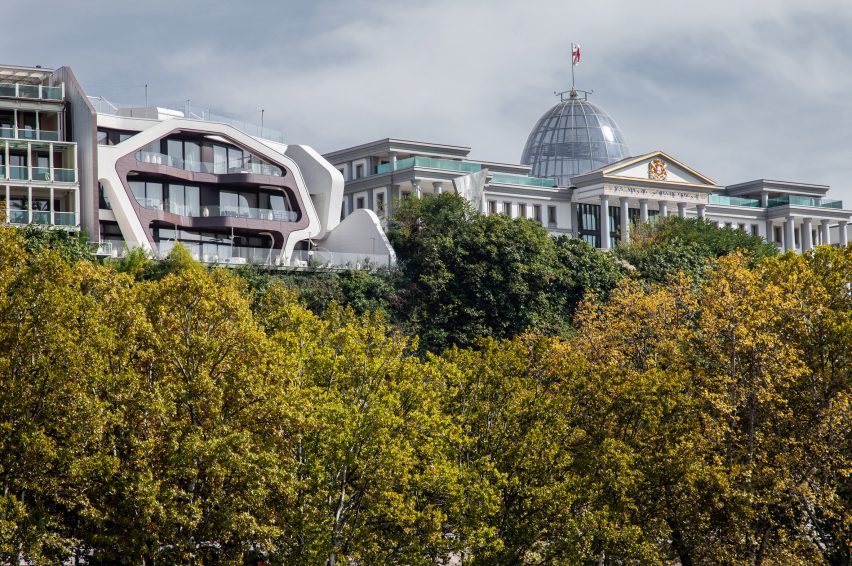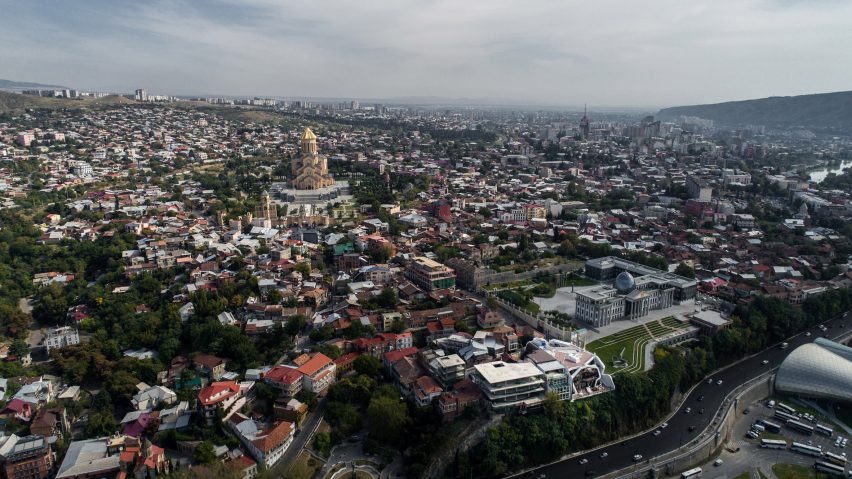
J Mayer H builds concrete-framed Pipia Panorama house on a cliff in Tbilisi
German architecture studio J Mayer H has built a house on a cliff next door to the glass-domed Presidential Palace in Tbilsi.
Called Pipia Panorama, the private residence is located in one of the most visible places in the capital of the country of Georgia.
Its cliff-top location affords it sweeping views over the city. In order to maximise them, J Mayer H designed the south-facing facade with large windows and terraces.

The concrete-framed building has protruding levels that form a canopy over the multiple balconies that stretch across the building. A zigzag screen creates privacy between the terrace and the Presidential Palace.
Rounded cut-outs in the terraces and where the top of the concrete frame extrudes over the top allow light to reach all levels of the outdoor areas. A roof deck with angular pools and seating areas stretches across the top of the entire house.

A two-tone colour scheme gives the frame definition. The outer layers that form the canopies and privacy screens are a reflective white, while the inner layers and terraces are an aubergine colour.
The interior of Pipia Panorama has an open core, with rooms sculpted out from the concrete frame. The house has been designed for a multi-generational family living together under one roof.
Pipia Panorama overlooks the Rhike Park and the curving reflective form of the as-yet-unopened Studio Fuksas-designed concert and exhibition hall.

Founded by German architect Jürgen Hermann Mayer in 1996, J Mayer H has also designed a series of border checkpoints, airports and service stations across Georgia.
Tbilisi is currently undergoing a development boom. An old Soviet printing press in the centre of the city has been turned into the Stamba hotel, while UNStudio is building a cluster of buildings that will form the new headquarters of Georgian bank TBC in the hills above Tbilisi.
Last year the first Tbilsi Architecture Biennial was held in the Gldani district, with young practices from across the world converging on the suburb to build a trail of pop-up pavilions and installations.
Photography is by Denis Esakov.